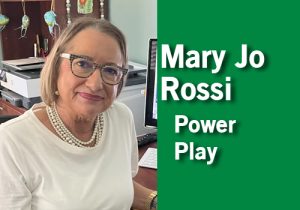Wondering how the pollsters got it so wrong?
 (Nov. 14, 2024) — I know we’re all sick of hearing about political polling. But I thought it would be mildly interesting to dissect what a poll is, what it does and what it doesn’t do. And why the national polls, especially in the blue wall states, were dead wrong this election season.
(Nov. 14, 2024) — I know we’re all sick of hearing about political polling. But I thought it would be mildly interesting to dissect what a poll is, what it does and what it doesn’t do. And why the national polls, especially in the blue wall states, were dead wrong this election season.
A poll is a “snapshot” of what a demographic sampling of voters thinks about an issue, a candidate or proposition at a given moment in time. The “samples” are derived from a data company and consist of a sampling of kinds of voters that are “likely” to vote in a given election.
For example, one sampling may be 50 Republican women ages 60-64 who are homeowners, likely voters and live in a particular region. One voter from this group is called or emailed with questions from a specific poll.
A poll to be valid within a margin of error, needs a sampling of at least 400, possibly 1,000, likely voters. Polling is not cheap – anywhere from $40,000 to $65,000 per poll.
When all the demographically grouped voters have provided their responses to the question, the information is tallied and put in percentages in what we call the poll’s “toplines.” The toplines give an “overall” look at where that district, county, state or the nation stands on the candidates or issues.
But the devil is always in the details.
What comes next is what we call the “crosstabs”, which is a multi-paged compilation of what voters think by party, age, ethnicity, geographic area, by issue and so on. This is the real “meat” of a poll and what strategists use to target specific voters in campaigns.
Now, let me tell you why I think our traditional system of polling is faltering and why it’s in need of reform.
First, voters (like some politicians) lie, especially in polls. For many reasons, not everyone wants to divulge who they REALLY are voting for or what they think about an issue.
On the national scene, the universes designated as “likely voters” for polling were statistically off this election. The women we thought would come out for Kamala Harris, not all of them did. The men who were infrequent voters and put Donald Trump into his second Presidency, were undertested in blue wall state polling. The testing of support from Latinos for a Trump win was also statistically off base.
In short, we need to better understand WHO to test in future polls and not rely on old methods of discerning likely voters.
This election season, we learned another thing about our old polling assumptions. We need to stop grouping voters by party and assuming that all party members have similar beliefs. For example, liberal Democrats and moderate Democrats may not share similar viewpoints on candidates or issues. After all, it was the Democrats in the blue wall states who put President Elect Trump over the top.
In California, the truth is, we have no idea WHO the No Party Preference (NPP) voters really are – even though they are the largest segment of voters in our state.
Are they Democrats who have abandoned their party, Republicans who aren’t in line with the MAGA movement, or are they simply voters who forgot to check a party box and were given the NPP designation by default? Or a combination of all of the above?
Our polling doesn’t dive deep into any of these questions.
While not all of us are happy about the outcome of the November 5th election, there is one thing I know for sure. We need to pick ourselves up by the boot straps and LEARN from this year’s foibles. Polling is one area I will be looking to rethink.
Mary Jo Rossi is a local political strategist managing state/local campaigns for over 40 years and is owner of Rossi Communications in Concord.

Mary Jo Rossi
Mary Jo Rossi is a local political strategist managing state/local campaigns for more than 40 years and the owner of Rossi Communications in Concord, CA.
